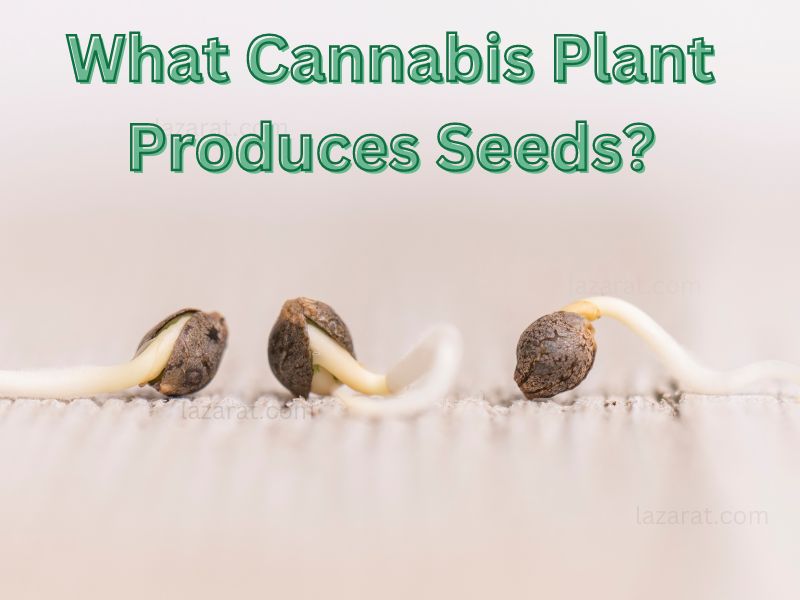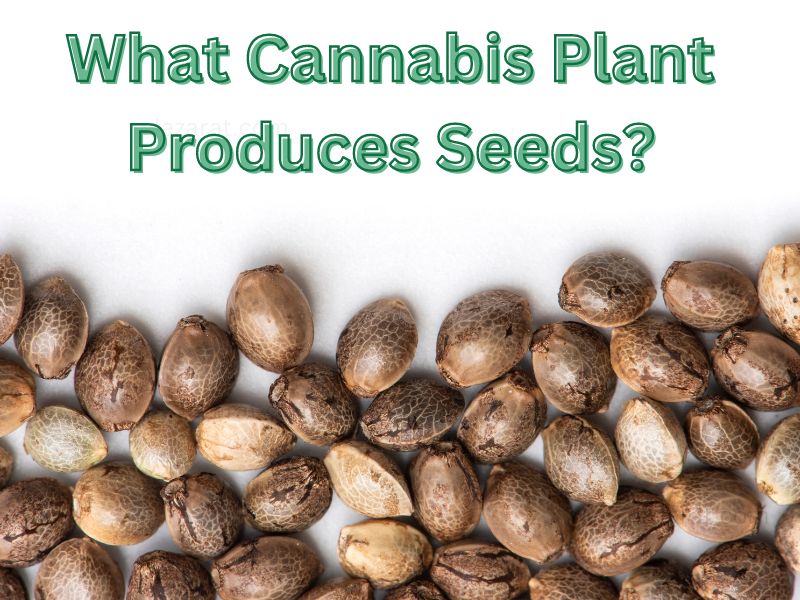Unraveling the Mystery of Cannabis Seeds
There’s an intriguing world hidden within the realm of cannabis seeds. This humble beginning of a plant, often overlooked, is a fascinating microcosm in the broader spectrum of cannabis cultivation. As we delve into this subject, we’ll explore the fundamental aspects of cannabis seeds, the plant that produces them, and the role they play in the marijuana industry.
Why Do Cannabis Plants Produce Seeds?
In the grand scheme of nature, all flowering plants, including cannabis, have one primary objective: to propagate their species. To achieve this, they produce seeds. These tiny capsules of life contain everything necessary to create a new plant. In the case of cannabis, the seeds are the result of successful pollination between male and female plants. Male plants produce pollen sacs that, when mature, release pollen into the air. The pollen then finds its way to the receptive pistils of the female plants, resulting in the formation of cannabis seeds.
The Cannabis Plant: A Dance of Males and Females
Unlike many plants, cannabis is dioecious, meaning it has distinct male and female individuals. In a wild setting, this separation of sexes fosters genetic diversity and strengthens the species. However, in cultivated settings, female plants are often isolated to prevent seed formation. The reason? Seedless buds, known as “sensimilla,” are more potent and sought after in the recreational and medicinal markets.
Yet, for those interested in breeding or seed production, both male and female plants are indispensable. The genetic traits carried by cannabis seeds will determine the characteristics of the new plant, including its potency, resilience, and growth habits.
Breeding Cannabis Seeds: An Art and Science
Breeding cannabis seeds is a meticulous process that combines both art and science. Breeders choose parent plants carefully, selecting for desirable traits. The male plant’s pollen will fertilize the female, and the resulting seeds will carry genetic information from both parents. Through selective breeding, cultivators have developed a wide array of cannabis strains, each with unique flavors, aromas, and effects.
The Journey from Cannabis Seeds to Harvest
Once pollination occurs, the female cannabis plant devotes its energy to seed production, creating a protective bract around each seed. Over the following weeks, the seeds mature, their color changing from a light hue to a dark brown or speckled finish. The bract eventually dries up, and the mature seeds drop to the ground, ready to start a new cycle of life.
For those interested in cultivating cannabis, seeds offer a wealth of opportunities. Germinating cannabis seeds is relatively straightforward. Typically, a grower would place the seeds in a damp medium such as paper towels or directly into the soil. Under the right conditions of moisture and temperature, the seeds will sprout, and a root will emerge. From there, it’s a journey of growth and care until the plant reaches its flowering stage.
Cultivating from seeds, as opposed to clones or cuttings, has several advantages. Firstly, cannabis seeds will produce a taproot, which anchors the plant into the soil and aids nutrient uptake. Clones do not produce this root, which can limit their potential size and vigor. Secondly, seeds offer a level of genetic diversity and resilience that clones do not, making them more robust against pests, diseases, and environmental stress.

The Value of Cannabis Seeds in the Market
Cannabis seeds hold significant value in the legal marijuana market. Specialty breeders have created countless strains, with seeds often sold directly to consumers or growers. These seeds represent a kaleidoscope of genetic potential, offering variations in potency, flavor, growth characteristics, and medical benefits.
Cannabis seeds are also an essential resource in the hemp industry. Hemp is a variety of cannabis sativa that is low in THC but high in CBD, a cannabinoid with a multitude of therapeutic benefits. Hemp seeds are a popular health food, and the plants themselves are a source of fiber, biofuel, and a host of other industrial products.
From Seed to Seed: The Life Cycle of Cannabis
To better understand the process of cannabis seed production, we need to take a closer look at the life cycle of the cannabis plant. This journey begins with germination, the stage when a new plant emerges from the seed. Following germination, the plant enters the vegetative stage, where it focuses on growing larger and stronger. The plant develops a robust root system and lush foliage during this phase, preparing itself for the flowering stage.
The flowering stage is the most critical for seed production. If a female plant is pollinated by a male plant during this stage, the production of cannabis seeds begins. It’s interesting to note that female plants can also produce seeds without male plants through a process called parthenocarpy, but these seeds, often referred to as “feminized seeds,” are genetically identical to the mother plant.
In the realm of cannabis cultivation, feminized seeds are highly prized. Since only female cannabis plants produce the cannabinoid-rich flowers most consumers and patients want, feminized seeds guarantee that virtually every plant grown will be a flower-producing female. This makes cultivation more predictable and efficient.
The Future of Cannabis Seeds
The future of cannabis seeds is undoubtedly bright and dynamic. As research into cannabis genetics advances, we can expect to see even more diverse and specialized cannabis strains. From plants bred for specific medical conditions to strains designed for industrial hemp applications, the possibilities are vast.
Furthermore, the legal landscape for cannabis is changing rapidly. As more regions legalize cannabis for medicinal and recreational use, the demand for high-quality cannabis seeds will continue to grow. This presents opportunities not just for commercial growers, but also for home growers and cannabis enthusiasts who want to explore the complexities and joys of cannabis cultivation.
In conclusion, cannabis seeds are more than just a means to an end. They are the embodiment of the cannabis plant’s past and future, carrying the genetic legacy of ancient strains and the potential for new ones. They hold the promise of innovation in medicine, industry, and personal enjoyment.
References:
Cannacon 1. female cannabis plants
Seeds are only produced by female cannabis plants after a male plant pollinates them. To grow your own seeds you will need the female plants that produce the seeds, as well as a male plant to fertilize the female plants. It’s as simple as placing the male plant near the female plant you want to fertilize.
Cannaconnection 2. How to produce your own cannabis seeds – CannaConnection
Cannabis seeds develop in the flowers of the female plants after about 4-6 weeks from pollination. You will see the seeds starting to form in …
© 2023 by Lazarat.com. All rights reserved. No part of this document may be reproduced or transmitted in any form or by any means, electronic, mechanical, photocopying, recording, or otherwise, without prior written permission of Lazarat.com.

Leave a Reply